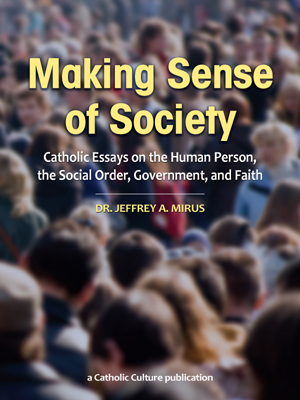Catholic Activity: Nameday Ideas for the Feast of St. Andrew, the Apostle
Feast day is November 30. Includes dessert ideas, symbols, decorations and prayers.
DIRECTIONS
The apostles were called by our Lord to be witnesses of Him and to preach the gospel. They are Sts. Peter and his brother Andrew; James the Greater, and his brother John; Thomas; James the Less and his brother Jude (Thaddeus), cousins of Jesus; Philip; Bartholomew; Matthew; Simon Zelotes; and Matthias, who took the place of Judas. The New Testament includes Paul, Barnabas and others, and these with St. Luke are celebrated as apostles liturgically (but Luke is not mentioned in the Canon of the Mass).
Donald Attwater in A Catholic Dictionary says: "The apostles were the first bishops of the Christian Church. Through them the bishops have ever since had the divine commission to teach all men and govern the Church in union with the representative of their chief, St. Peter, and the God-given power to confer the sacraments necessary to the salvation of souls and the continuance of the Church."
Each apostle has a traditional symbol of ancient origin which is recognized all over the world. Examples of the shields of the apostles with their symbols may be seen in the great Catholic cathedrals and even in non-Catholic churches. An excellent example of modern symbolism is The Twelve Apostles in the Church of Our Lady of Sorrows, South Orange, New Jersey. Concordia Lutheran Seminary in St. Louis, Missouri, has a set of apostolic shields in stone which are among the best in America. Those carved over the main door of the First Baptist Church in Pittsburgh and in the Presbyterian Church in lndianapolis are also excellent. These are mentioned to assist Catholics in mixed marriages to answer objections to the symbolism connected with the saints.
St. Andrew, brother of St. Peter, patron of Scotland, Greece, and Russia, was the first of Christ's apostles in the order of time. He is mentioned in John 6:8-9 and John 12:22; his name occurs in the Canon of the Mass and in the embolism upon the Lord's Prayer in the Ordinary of the Mass.
Hymn: NOW LET THE EARTH WITH JOY RESOUND (sung to the melody of: Come, Holy Ghost).
Now let the earth with joy resound And heaven the chant re-echo round; Nor heaven nor earth too high can raise The great Apostles' glorious praise!
Sickness and health your voice obey, At your command they go or stay; From sin's disease our souls restore, In good confirm us more and more.
So when the world is at its end And Christ to judgment shall descend, May we be called those joys to see Prepared from all eternity.
Praise to the Father, with the Son And Paraclete forever one: To Thee, O holy Trinity, Be praise for all eternity. Amen. Father: The Lord and King of apostles.
All: Come, let us adore.
Father: Blessed Andrew, seeing this cross shouted joyfully: "I have ever been your lover, desiring to embrace you, O good Cross!"
All: Take me away from men and return me to my Master, so that through you He may receive me who through you redeemed me, alleluia.
Father: Let us pray. O Lord, as Andrew the apostle was both a preacher and a ruler of Your Church, so may he unceasingly intercede for us with You. Through Christ, our Lord.
All: Amen. Christ conquers, Christ reigns!
Dessert and decorations. St. Andrew's emblem is the traditional cross of his martyrdom, shaped like an X. A red shield bears this cross (saltire) with the ends reaching to the border. Another shield bears crossed fish, recalling Andrew's original occupation and his call to become a "fisher of men" (Mark 1:17).
For a favorite Andrew of our acquaintance we made a "fisherman's net" tablecloth. A package of blue crepe paper, left folded and cut alternately in half-inch strips to within one inch of the fold on either side, opens to a fish-net table covering, if the folded paper is opened carefully. With this we used a large gold fish of gummed crepe paper for a centerpiece. Each child's place-card was in the shape of a fish. We used the ship cake for the dessert. Another easy dessert would be gelatine in a fish mold, which can be bought in hardware stores.
Cut-up cakes are a way to make nameday cakes without special pans. You simply bake your favorite cake recipe or cake mixes in standard-size pans. The trick is in the cutting, which is simple and fun to do. The beauty of these cakes is the flaky coconut which decorates them and the symbolism which is so intriguing to children of all ages. Our children never tire of these cakes; in fact, they enjoy looking at them so much that they sometimes do not like to see them eaten. For St. Andrew a ship or fish cut-up cake would be appropriate.
Other saints of this name are St. Andrew Fournet, whose nameday symbol is a book; he founded the Congregation of the Daughters of the Cross; St. Andrew Avellino, whose symbol is an altar; christened Lancelot, he is the patron of boys called Lance. Blessed Andrew Chakichi was an eight-year-old Japanese boy beheaded at Nagasaki together with his parents and his brother. Blessed Andrew Kagwa of Uganda, a Negro military officer, was condemned to death after his baptism. His right arm was severed from his body before he was beheaded in 1886. Our favorite is the martyr Andrew Bobola, S.J., called by schismatics Duszuchwat (robber of souls). For these Andrews the cross cake or the crown cake is an appropriate dessert.
Activity Source: My Nameday — Come for Dessert by Helen McLoughlin, The Liturgical Press, Collegeville, MN, 1962







